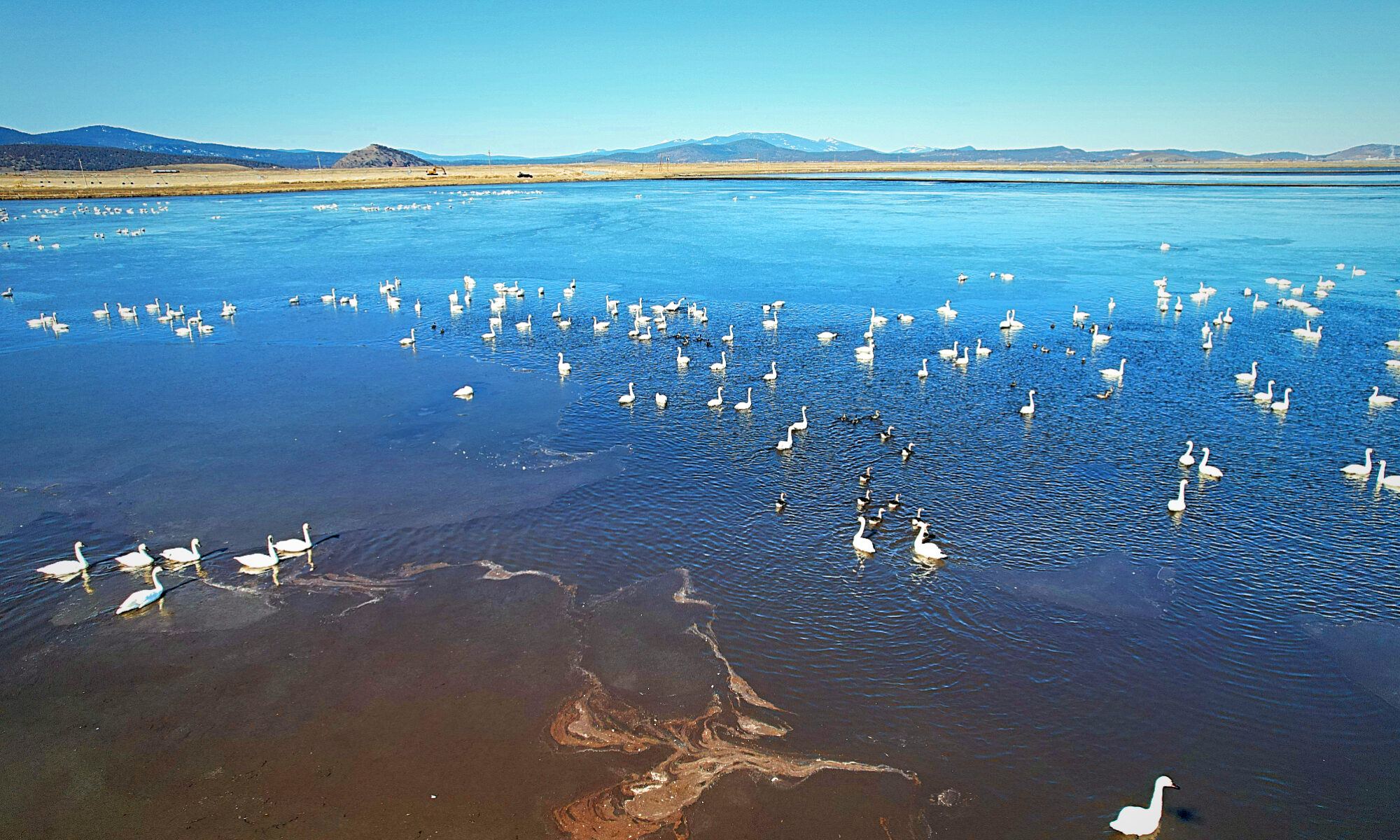Hanging a new calendar on the wall is usually a time to look ahead at the promise of what a new year brings.
While we’d like to reminisce about the highlights of last year and look forward to what could be, we’re unfortunately plagued by a problem from 2023.
Grasshoppers.
For Klamath Drainage District family farmers, and pretty much all of Klamath ag, last year’s grasshopper infestation is promising to pay off in troubling dividends. What seemed to start on Lower Klamath National Wildlife Refuge spread throughout the Klamath Basin, initially devastating farms along Stateline Road, spread like a virus to surrounding communities and irrigation districts.
In KDD, grain crops lost tonnage, as did hay crops. Healthy pastures were stripped of foliage, requiring beef ranchers and other livestock producers to find ground outside the district or use acres they’d hoped to use later in the season. KDD farmers and ranchers also paid for more grasshopper treatment than usual to fight the pests.
In short, the grasshopper infestation was not only an ecological disaster, but also an economic disaster for Klamath Basin farmers.
At the end of November, the Oregon Department of Agriculture (ODA) released its 2023 Grasshopper and Mormon Cricket Report. The report covered the damage done to Oregon agricultural producers due to infestations of Mormon crickets and grasshoppers all through the state, and that report would instruct the United States Department of Agriculture (USDA) of economic losses and potential programs to help mitigate the insect damage.
Much to the dismay and chagrin of Klamath ag, the ODA’s report indicated there was very little damage caused by grasshoppers to area producers, and furthermore, no economic damages.
On December 12th, 2023, Klamath County Commissioner, Dave Henslee, held a workshop with the Board of Commissioners to discuss the 2023’s grasshopper damage and the ODA’s report. At the meeting, attendees heard report after report of the damage and losses Basin farmers suffered from the grasshoppers. Klamath Water Users Association’s director of water policy, Moss Driscoll, estimated the ripple effect of economic damage could be in the hundreds of millions of dollars in the course of following years.

Towards the end of the meeting, ODA’s director, Lauren Henderson, joined the discussion via Zoom and indicated that the report had been merely taken out of context; ODA’s pest monitoring sites didn’t capture the same number of bugs that the rest of the Klamath Basin was seeing, and only affected Federal lands, 6,000 acres of which are in KDD.
Eventually, he did concede that Klamath ag did indeed suffer losses. And thanks to Cody Holthouse from the ODA, who joined Mr. Henderson on the phone, the department is still taking grasshopper damage reports.
Unfortunately, there will be more for KDD patrons and the Klamath ag community to report.
In the December board meeting, we heard reports of hay bales being opened up and the centers of them being emptied out, due to grasshoppers that were baled in the forage eating their fill. At auction, average calf weight was down. And if that isn’t enough of a financial brunt for farmers and ranchers to carry, banks are backing away from financing operating lines and loans.
There’s also the worry of grasshopper eggs being spread in the district through feeding livestock the infested hay. Unless there’s a vicious, hard freeze, the eggs will likely hatch in 2024, exacerbating the 2023 grasshopper problems.
Getting In Front of the Klamath Basin 2024 Grasshopper Infestation
Fortunately, Klamath Basin ag’s voice has been heard and work is being done to try and head off another potentially disastrous grasshopper infestation.
The week of January 29th, KDD is hosting a session with ODA director Lauren Henderson to talk about what happened in 2023, and hopefully out of the discussions a plan for 2024 will evolve. When a date and time are confirmed, we will share it on the KDD Facebook page.

Regardless of whether or not members of the ag community are able to make it to the meeting, we strongly recommend taking time to fill out the Oregon Department of Agriculture’s 2023 Public Grasshopper Survey Report Form (you can click on the image on the right to access the reporting form). At this time, the ODA is committed to receiving these reports, and they will help the department ascertain the level of damage 2023’s infestation caused.
To help head-off future infestations, especially those starting on the Lower Klamath refuge, we need policymakers to commit to getting water to our wildlife refuges. As they found on the Klamath Marsh in 2013, drought conditions worsened grasshopper outbreaks. By supporting plans such as KDD’s restoration project, future grasshopper plagues can be minimized.
With all of the other challenges Klamath Basin family farmers and ranchers face, it’s unfortunate that grasshoppers appear to be another ongoing blow being dealt to our communities. Hopefully another infestation won’t materialize in 2024. If one does, we will be prepared so we can minimize the damage to our local economy and ecosystem.









